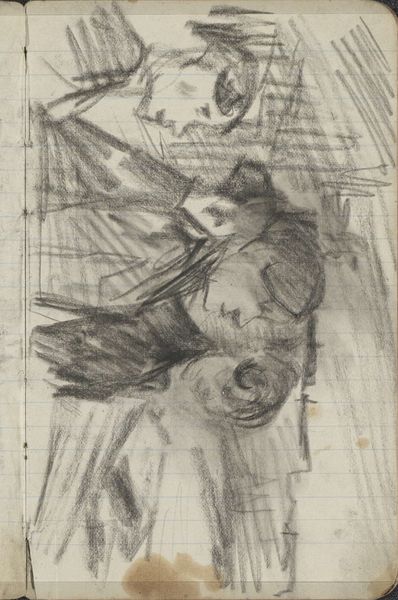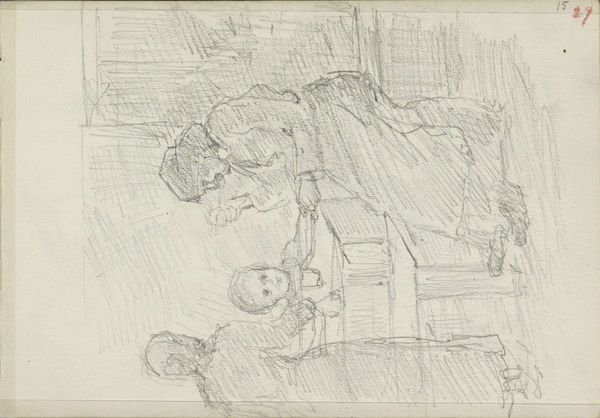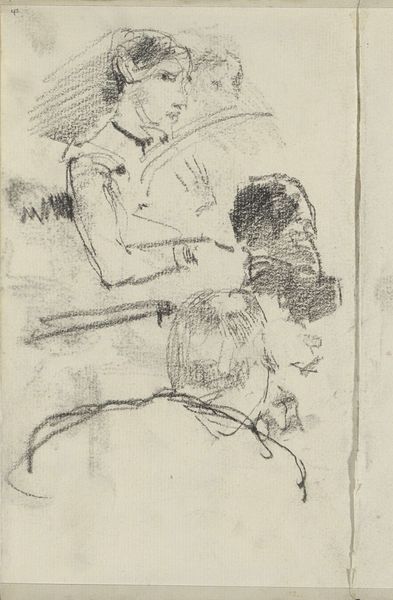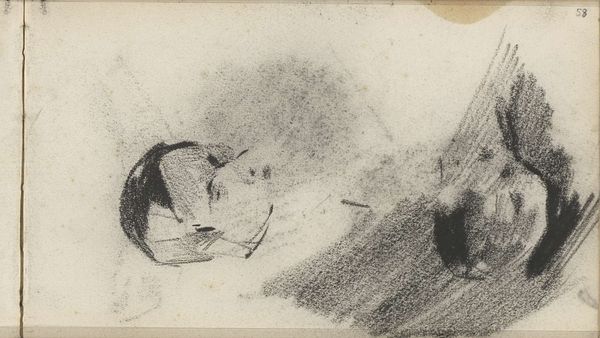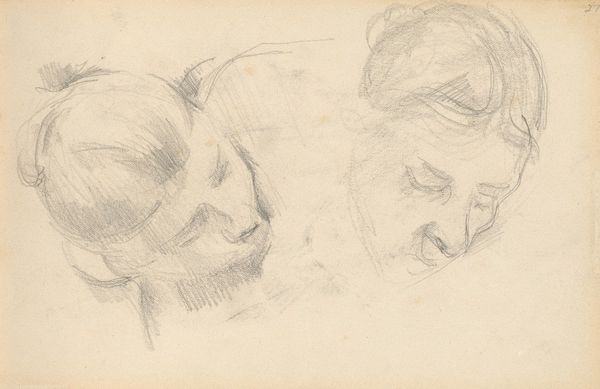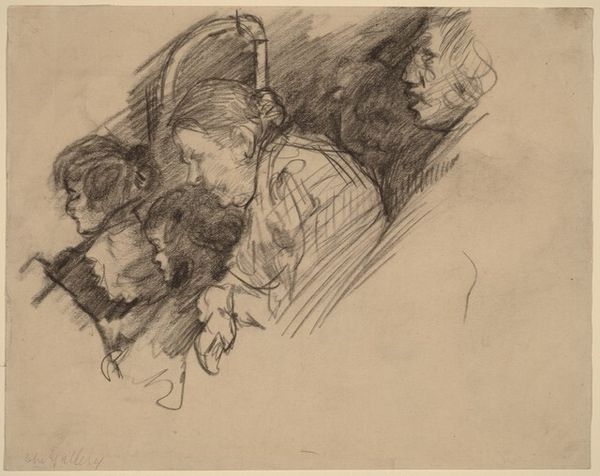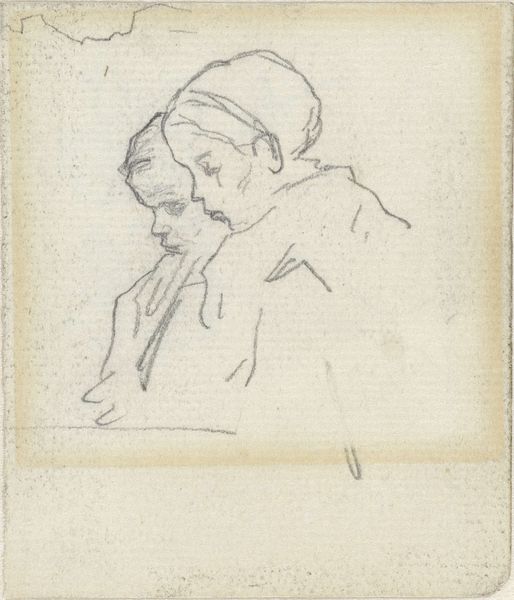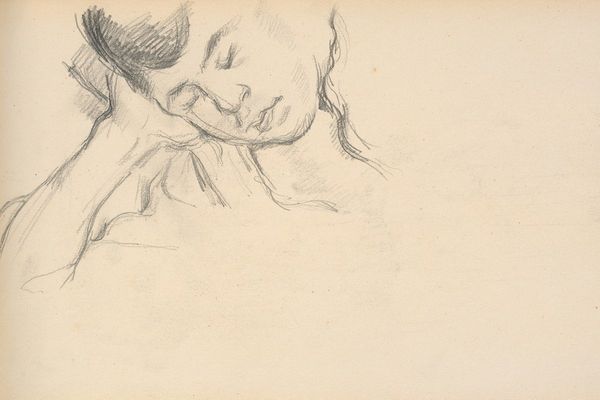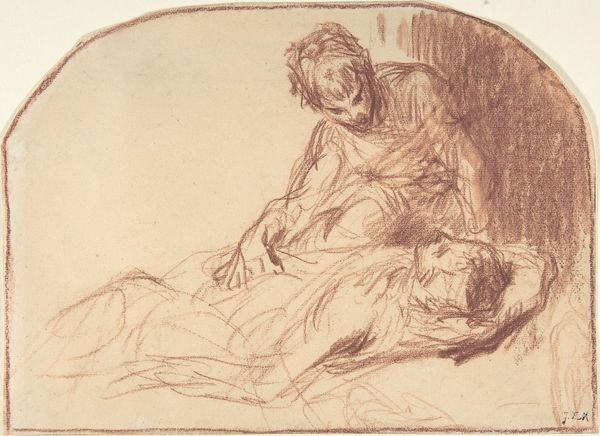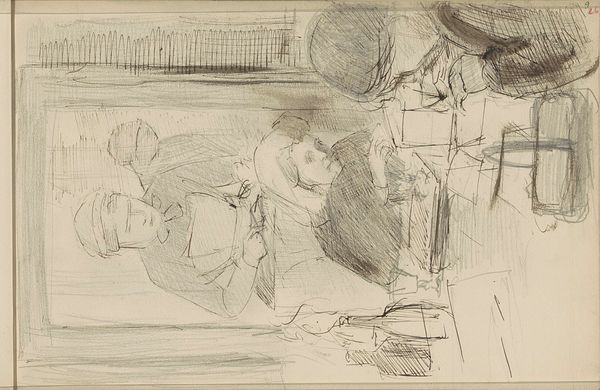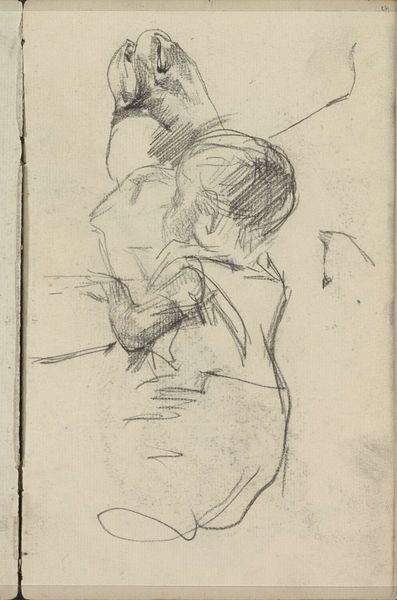
Copyright: Public Domain: Artvee
Editor: This is "A Mother and Two Children" by Pierre-Auguste Renoir, created in 1912 using charcoal. I’m struck by its quiet, intimate mood; the sketchy lines feel very immediate and personal. What symbols or meanings do you see in it? Curator: Well, looking at this, I'm immediately drawn to the embrace itself. The mother’s posture and the way she cradles one child while the other looks on... what emotions do *you* think that arrangement evokes? Is it security, affection, perhaps a hint of longing from the child slightly outside the circle? The curve of her neck and the bowed head speaks to an established iconographic symbol associated with humility and, also, Madonna figures from earlier Renaissance traditions, don’t you think? Editor: I see what you mean! I hadn’t made that connection. It does feel like there's an echo of those earlier Madonna paintings in the protectiveness of the mother’s gesture. But the loose, impressionistic style almost makes it feel more everyday, more human, less like a religious icon. Curator: Precisely! It’s about reconciling the quotidian with deeply embedded cultural memories of motherhood. Think of the countless images of mothers and children throughout history – from religious icons to family portraits. How does Renoir, through his medium and technique, both connect to and depart from this tradition? Consider also how his blurring the faces might give universality, rather than simply rendering a particular mother. What's lost, and what's gained in that abstraction? Editor: That’s a really interesting point – the lack of detail actually makes it more relatable. It's less about a specific person and more about the universal experience of motherhood. Curator: Yes, it’s like Renoir invites us to project our own associations and experiences onto this simple domestic scene. I see continuity – that thread that tethers our emotions through generations and across different styles of art. What about you? What stays with you now? Editor: Definitely the blending of a classic pose with an informal drawing style – it makes the theme accessible, showing how essential familial bonds always are, while updating it for his time. It’s thought-provoking!
Comments
No comments
Be the first to comment and join the conversation on the ultimate creative platform.
